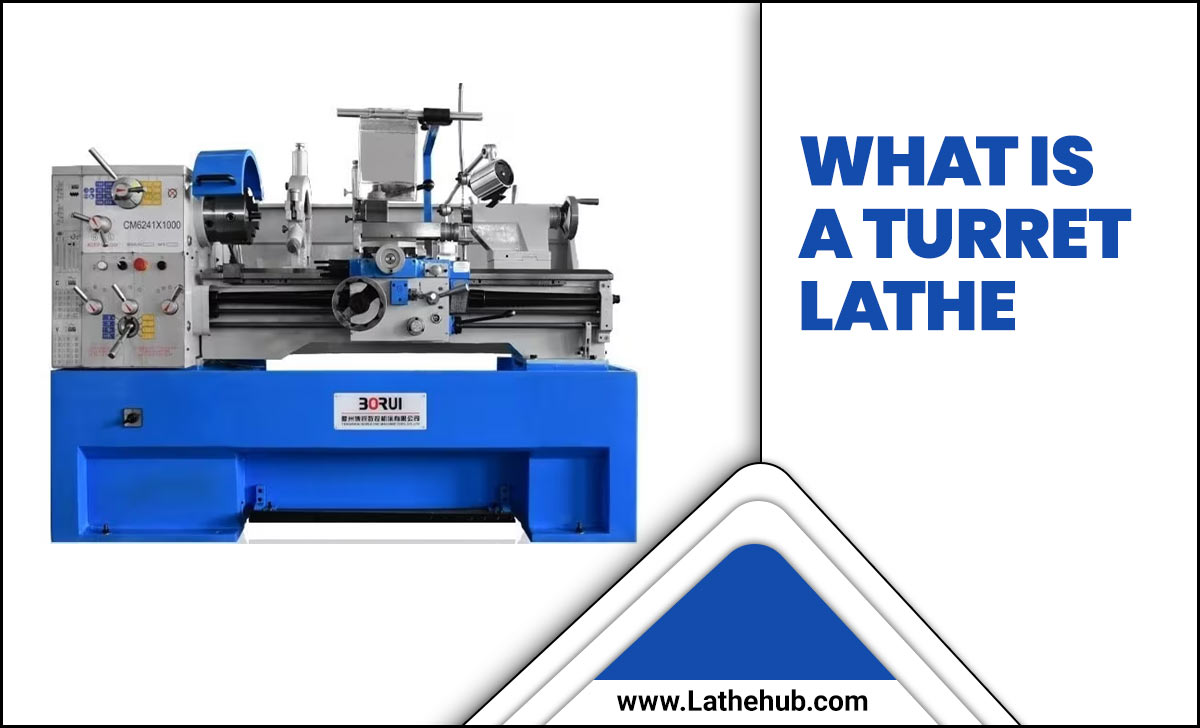3/16″ carbide end mills are excellent for clearing mild steel effectively, especially when chip evacuation is critical for clean cuts and tool longevity.
So, you’ve got a project that involves machining mild steel, and you’re looking at using a 3/16 inch carbide end mill. That’s a great choice! But sometimes, especially with softer materials like mild steel, you can run into a bit of a snag: chips aren’t clearing out of the cutting area properly. This can lead to a messy cut, tool damage, or even a ruined workpiece. Don’t worry, it’s a common challenge, and with the right approach, you can achieve clean, efficient cuts. We’re going to walk through how to make sure your 3/16″ carbide end mill handles mild steel like a champ, focusing on getting those chips out of the way fast.
The Mighty 3/16″ Carbide End Mill: Your Mild Steel Ally
When it comes to machining mild steel, the 3/16 inch carbide end mill is a versatile workhorse. Its size makes it perfect for a wide range of tasks, from intricate detailing to general pocketing. Carbide is a fantastic material for this because it’s incredibly hard and can handle higher cutting speeds and temperatures than high-speed steel (HSS). This means faster machining and better tool life, provided you use it correctly.
However, mild steel, while easy to machine in many ways, can sometimes be a bit sticky. It has a tendency to “gum up” or pack chips into the flutes of the end mill. This is where understanding “chip evacuation” becomes crucial.
What is Chip Evacuation, and Why Does It Matter?
Chip evacuation is simply the process of removing the material (chips) that your cutting tool shaves off the workpiece. Think of it like cleaning up sawdust while you’re sawing wood – if it piles up, it gets in the way.
In metal machining, poor chip evacuation is a big problem because:
It causes tool wear: Hot chips that can’t escape get jammed against the cutting edge. This overheats the tool, leading to premature wear and even catastrophic failure.
It creates a poor surface finish: Packed chips can cause the tool to rub rather than cut, leading to a rough, undesirable finish on your workpiece.
It can cause tool breakage: When chips build up, they can exert excessive force on the end mill, leading to it snapping.
It slows down your machining: If the machine can’t clear chips efficiently, you’ll have to slow down your cutting speed to compensate, making the job take longer.
For mild steel and a 3/16″ carbide end mill, getting chip evacuation right is key to unlocking the tool’s full potential and achieving a smooth, efficient cut.
Choosing the Right 3/16″ Carbide End Mill for Mild Steel
Not all 3/16″ carbide end mills are created equal, especially when it comes to chip evacuation in mild steel. Here are some important features to look for:
End Mill Geometry Matters
Number of Flutes: This is a big one for chip evacuation.
2-Flute End Mills: These are generally the best choice for machining softer materials like mild steel. With fewer flutes, there’s more open space between them, allowing chips to exit more easily. This is absolutely essential for preventing chip packing.
3-Flute End Mills: Can be used, but you’ll need to run them at slightly lower feed rates or be more mindful of clearing. They offer a good balance for rigidity and some admit for chip clearance.
4-Flute End Mills: Typically reserved for harder materials or finishing operations where chip load per flute is lower, and chip evacuation is less of a concern. For mild steel and efficient clearing, you’ll want to steer clear of these.
Helix Angle:
High Helix (e.g., 45-60 degrees): End mills with a steeper helix angle are designed to “pull” chips up and out of the cut more effectively. This is excellent for materials that tend to pack easily, like aluminum and mild steel.
Standard Helix (e.g., 30 degrees): A good all-around choice, but a high helix will generally perform better for chip evacuation in mild steel.
Core Thickness: The diameter of the core that supports the flutes. A thicker core provides more rigidity, which is good for preventing chatter and tool deflection. However, a thicker core can also mean less space for chip clearance. For this application, a balance is key, but a standard core thickness is usually fine with a 2-flute design.
Coatings: While not strictly geometry, coatings can impact chip evacuation. For mild steel, uncoated carbide is often perfectly adequate and can be very effective. However, a TiN (Titanium Nitride) coating can add a slippery surface, which helps reduce friction and chip adhesion, potentially improving evacuation.
Length Considerations: Stub vs. Standard
When we talk about a “3/16 carbide end mill,” the length can vary. For chip evacuation in mild steel, especially in deeper pockets or slots, a stub length end mill can be advantageous.
Stub Length: These have a shorter flute length and overall length compared to standard end mills. This increased rigidity helps prevent chatter and deflection, allowing for potentially higher feed rates. Crucially, their shorter length means less chance of chips getting jammed up deep in a narrow cavity.
Standard Length: These offer more reach, which can be useful for certain operations. However, they are more prone to deflection and can make chip evacuation more challenging in deeper cuts.
Example Table: Feature Comparison for 3/16″ End Mills
| Feature | Best for Mild Steel Chip Evacuation | Pros | Cons |
| :——————- | :———————————- | :—————————————————————- | :—————————————————————— |
| Flutes | 2-Flute | Excellent chip clearance, less chip packing risk. | Can be less rigid than 4-flute mills, not ideal for heavy finishing. |
| | 3-Flute (Use with caution) | Good balance of rigidity and chip clearance. | Requires more attention to chip management than 2-flute. |
| Helix Angle | High Helix (45°-60°) | Aggressively pulls chips out, minimizes chip re-cutting. | Can be more prone to chatter on very rigid setups. |
| | Standard Helix (30°) | Good all-around performance, less prone to chatter. | Less effective at sweeping chips compared to high helix. |
| Length | Stub Length | More rigid, less deflection, better chip control in pockets. | Limited reach. |
| | Standard Length | Greater reach for certain applications. | More deflection, potential for chip packing in deeper cuts. |
| Coating | Uncoated or TiN | Uncoated: Cost-effective, good performance. TiN: Reduces friction. | Other coatings might be too specialized or less effective here. |
A good starting point for mild steel chip evacuation with a 3/16″ end mill would be a 2-flute, high-helix stub length carbide end mill, possibly with a TiN coating.
Setting Up Your Machining Environment for Optimal Chip Evacuation
It’s not just about the tool; the environment and your machine setup play a huge role.
Machine Rigidity is Key
Sturdy Machine: Ensure your milling machine is rigid. A wobbly machine will amplify any issues with chip packing and tool chatter. For hobbyists, this means having a solid base and well-maintained ways. Check for any play in your machine’s components.
Secure Workholding: Your workpiece needs to be held down firmly. Use appropriate clamps, vices, or fixturing. Any movement during the cut will negatively impact surface finish and chip evacuation.
Coolant and Lubrication: Your Chip’s Best Friend (or Worst Enemy)
This is where opinions can vary, but for mild steel and chip evacuation, using a cutting fluid is often beneficial.
Flood Coolant: If your machine has a flood coolant system, use it liberally. The coolant not only keeps the tool and workpiece cool (which is good for tool life) but also helps wash chips away from the cutting zone and out of the flutes.
Mist Coolant: A mist system delivers a fine spray of coolant and air. It’s effective at cooling and can help move chips, especially in smaller machines.
Cutting Paste or Oil: For manual machines or simpler setups, applying a good quality cutting paste or oil directly to the cutting area before and during the operation is essential. Look for products specifically designed for milling steel. These lubricants reduce friction, keep chips from welding to the tool, and help carry them away.
Air Blast: A directed air blast can be surprisingly effective, especially in conjunction with a lubricant. It helps blow away chips, preventing them from re-entering the cut and aiding movement.
Crucial Tip: Avoid using too little coolant or lubricant. In mild steel, this is a recipe for chip welding and packing. Conversely, some operations require a dry cut for chip evacuation, but this is less common with mild steel and a 3/16″ end mill.
Programming and Cutting Strategies for Superior Chip Evacuation
How you program your cuts significantly impacts chip evacuation.
Understanding Your Cutting Parameters
Spindle Speed (RPM): This is how fast the end mill spins. For a 3/16″ carbide end mill in mild steel, a common range is 2000-5000 RPM. The exact speed depends on your machine’s capability, the depth of cut, and the material hardness.
Feed Rate (IPM or mm/min): This is how fast the tool moves through the material. This is where chip evacuation really comes into play.
Chip Load: This is the thickness of the chip being removed by each cutting edge (or flute) of the end mill. It’s calculated as:
`Chip Load = Feed Rate / (Spindle Speed Number of Flutes)`
For mild steel with a 3/16″ carbide end mill, you generally want a chip load that is not too small (which leads to rubbing and poor chip evacuation) and not too large (which can break the tool). A good starting point for a 2-flute end mill might be between 0.001″ to 0.003″ (0.025mm to 0.075mm) per flute.
Cutting Strategies Explained
Full Slotting vs. Pocketing:
Full Slotting: When you need to create a slot that is exactly the width of your end mill (e.g., a 3/16″ slot with a 3/16″ end mill), this is called full slotting. It’s the most demanding operation for chip evacuation because the tool fills the entire width.
Pocketing: Creating a cavity larger than your end mill. This offers more freedom for chip evacuation if done correctly.
“Breathing Room” – Down-Milling vs. Up-Milling:
Down-Milling (Climb Milling): The tool rotates in the same direction as its feed. This results in thinner chips at the start of the cut and thicker chips at the end. It generally produces a better surface finish and puts less stress on the toolholder. For chip evacuation, it can be effective as chips are often pushed ahead of the rotation.
Up-Milling (Conventional Milling): The tool rotates against the direction of its feed. This results in thicker chips at the start of the cut and thinner chips at the end. It can be more prone to tool chatter but sometimes offers better control over chip thickness. Generally, down-milling is preferred for chip control in mild steel.
Step-Over and Step-Down:
Step-Down (Depth of Cut): How deep the tool cuts into the material per pass. For mild steel with a 3/16″ end mill, you can often afford a decent depth of cut, but don’t overdo it, especially if you’re slotting. A good rule of thumb might be a step-down of 0.100″ to 0.250″ (2.5mm to 6mm) for slotting, and potentially deeper for pocketing.
Step-Over (Width of Cut): How much the end mill moves sideways for each pass when milling a pocketing area. For effective chip evacuation, especially as you get deeper, it’s beneficial to keep the step-over relatively small, often 25-50% of the tool diameter. This means the tool isn’t trying to remove too much material width-wise in a single horizontal pass, allowing better chip flow out of the sides.
Engraving / Spiral Machining: In some cases, especially for very fine details or shallow pockets, you might use a spiral contouring strategy. This involves the end mill moving in a circular path that gradually moves outwards or inwards, essentially milling a widening or narrowing slot. This can be good for chip evacuation because the tool is always cutting on its periphery, and the chips are generally thrown outwards.
Specific Techniques for Mild Steel Chip Evacuation
1. Peck Drilling / Plunge Cycles: If you need to plunge the end mill straight down into the material (not recommended for general milling, but sometimes necessary), use a peck depth. This is like drilling: the tool plunges down a short distance, retracts to clear chips, and then plunges again. CNC machines have specific G-code cycles for this (e.g., G83). For manual machining, you’d achieve this by plunging incrementally and retracting periodically.
2. Step-Down Strategy: When milling a pocket, don’t try to take all the material off at full depth in one go. Mill it in layers (smaller step-downs). This allows you to control chip load and evacuation at each level.
3. Spiral Pocketing (Ramp Moves): Instead of plunging vertically, program the end mill to enter the material by spiraling downwards. This is much kinder to your end mill and promotes much better chip evacuation than a direct plunge. Many CAM software packages automate this.
4. Avoid Re-cutting Chips: This is the golden rule! Watch your tool paths. Ensure that the end mill isn’t entering a clean area of material after it has already pushed chips into that area. This is why coolant and air blast are so helpful, as they clear the path.
5. Experiment with Feed Rate: If you’re seeing chip packing, try slowing down your feed rate slightly. This reduces the chip load per flute, making the chips smaller and easier to clear. The goal is to find the sweet spot where you’re efficiently removing material without overloading the flutes.
6. Use Break-Through Settings: When milling a pocket or slot, program the machine to go just slightly deeper than the required depth on the final pass if you are going through the material. This helps ensure that the bottom of the cut is clean and ready for the next operation, and avoids leaving a burr that might interfere with chip clearing.
Practical Steps: How to Use Your 3/16″ Carbide End Mill
Let’s break down a typical operation, like milling a pocket, to illustrate these principles.
Step-by-Step: Milling a Pocket with a 3/16″ End Mill
Scenario: You need to mill a rectangular pocket, 1″ wide by 1.5″ long, 0.250″ deep, into a piece of mild steel plate, using a 3/16″ (0.1875″) 2-flute, high-helix stub length end mill. Your CNC mill is equipped with a coolant system.
1. Preparation:
Secure Workpiece: Mount your mild steel plate firmly in the milling vise or on your machine table. Ensure it’s indicated to be square if precise alignment is needed.
Install End Mill: Securely install the 3/16″ carbide end mill in your collet chuck or tool holder. Ensure it’s fully seated and tightened.
Set Z-Zero: Accurately find your Z-zero on the top surface of the workpiece.
Set X/Y Zero: Establish your X and Y zero point, typically at a corner of the intended pocket.
2. Initial Calculations (Example):
Tool Diameter: 0.1875″
Number of Flutes: 2
Desired Depth of Cut (Step-Down): Let’s start with 0.125″ (half the total depth).
Desired Chip Load: Aim for 0.002″ per flute.
Target Spindle Speed: Let’s use 3000 RPM.
Calculate Feed Rate: Feed Rate = Spindle Speed Number of Flutes Chip Load
Feed Rate = 3000 RPM 2 0.002″ = 12 IPM
3. Program the Cut (Conceptual – for CNC):
Entry: Program a spiral ramp-in motion from the outside or an existing hole into the pocket area. This is much better than a direct plunge. Let’s say a spiral of 0.5″ diameter to reach cutting depth.
First Pass (Depth 0.125″):
Start the spiral entry.
Once at depth, begin milling the pocket outline. Use a down-milling strategy for best results.
Step-Over (Width of Cut):** Since the pocket is 1″ wide and the end mill is 0.1875″, you’ll need multiple passes.





